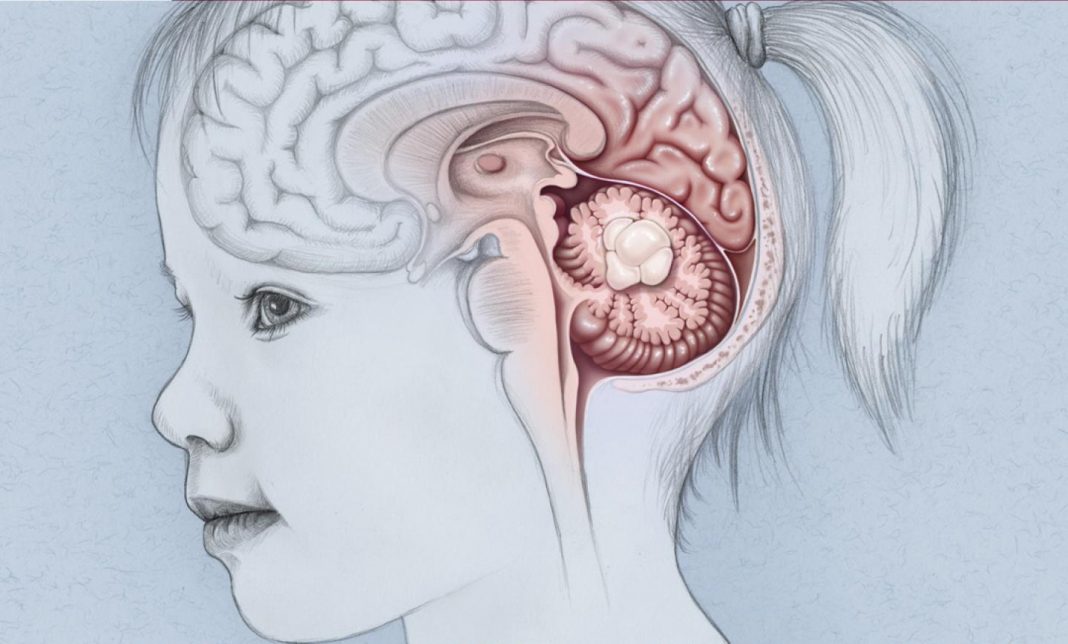It has long been suspected that pediatric brain tumors originate prenatally. Now a team of scientists have used single-cell transcriptome atlas of >65,000 cells from embryonal pons and forebrain, two major tumor locations, to uncover that several types of highly aggressive and, ultimately, fatal pediatric brain tumors originate during brain development. Further, they show that the genetic event that triggers the disease happens in the very earliest phases of cellular development, most likely prenatally.
The findings, published in a paper entitled, “Stalled developmental programs at the root of pediatric brain tumors” represent a significant advance in understanding these diseases, and are published in Nature Genetics.
“We have determined that stalled development of progenitor cells in the pons and forebrain, where a large proportion of high-grade embryonal and pediatric tumors emerge, is responsible for several childhood brain cancers,” said Claudia Kleinman, PhD, assistant professor of Human Genetics at McGill University. “Rather than developing normally, the cells’ progress is arrested and they transform into malignancies. But they retain many features of the original cells, and we could pinpoint the tumor origins among the hundreds of different cell types present in the brain.”
“New technologies allowing us to interrogate tumor cells each one at a time points to stalled development at the root of several high grade brain tumors in children,” added Nada Jabado, MD, PhD, a professor of Pediatrics and Human genetics at McGill University. “We name this the Peter Pan Syndrome as these cells are stuck in time unable to age and this is what causes these tumors. The challenge is now to identify how best to unlock these cells promoting their differentiation, and allowing for normal processes to take over.”
Brain tumors are the leading cause of cancer-related deaths in children. For several of these tumors, there are no effective therapies and survival is often less than two years. Indeed, Kleinman points out, very limited progress has been made in treating afflicted children. It is also important to note, says Kleinman, that because the genesis of the tumors is very early in brain development, there are really no environmental instigators or preventive measures that parents can take.
“The cornerstone to fighting these conditions is to identify the biological process at work, which is what our research has achieved,” she said. “Once we understand the underlying mechanisms, the search can begin for the means to unblock the arrested development of the cells. The complexity of the brain is astounding, and we now have narrowed down where to search.”
Applying single cell sequencing techniques and large-scale data analysis, researchers compiled the first comprehensive profile of the normal prenatal pons, a major structure on the upper part of the brainstem that controls breathing, as well as sensations including hearing, taste, and balance.
The research team established the molecular identity for cell types in the various brain regions, as well as the dynamics underlying their differentiation. They created an atlas of more than 65,000 individual cells and defined the developmental dynamics for 191 distinct cell populations.
The authors write that “projection of bulk tumor transcriptomes onto this dataset shows that WNT medulloblastomas match the rhombic lip-derived mossy fiber neuronal lineage and embryonal tumors with multilayered rosettes fully recapitulate a neuronal lineage, while group 2a/b atypical teratoid/rhabdoid tumors may originate outside the neuroectoderm” Importantly, these single-cell tumor profiles reveal highly defined cell hierarchies that mirror transcriptional programs of the corresponding normal lineages.
Summarizing their achievement, the authors of the paper wrote, “Current evidence thus supports a common etiological model for these tumors, where genetic alterations in vulnerable cell types disrupt developmental gene expression programs, ultimately leading to oncogenesis.” The findings identify impaired differentiation of specific neural progenitors as a common mechanism underlying these pediatric cancers and provide a rational framework for future modeling and therapeutic interventions.






